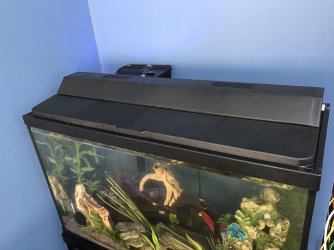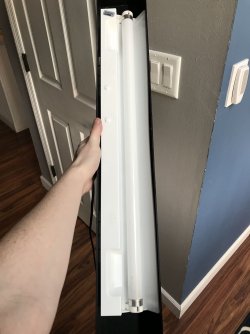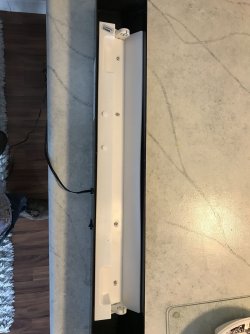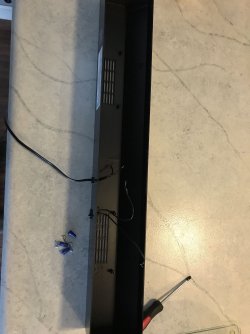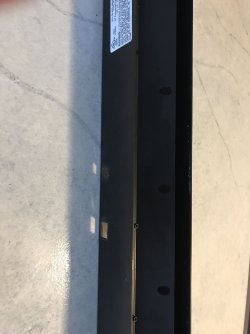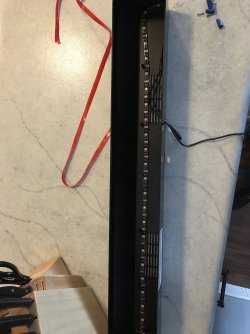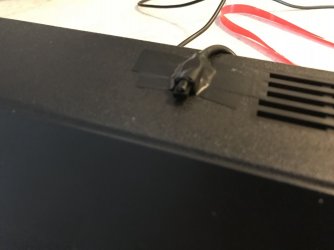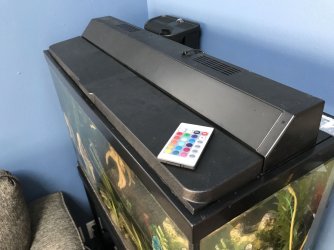My 30 gallon tank has a fluorescent bulb on it that puts off way too much heat. I try to keep my water between 79-80 degrees F (I'm American, remember), and I have a water heater with a thermostat that does a great job of that, but when I turn on the light the water heats up rapidly. Thankfully I noticed this before I started adding fish, and I currently turn on the light for no more than an hour at a time.
So, to fix this problem, I have decided to retrofit the fluorescent light fixture with an LED strip. I ordered a 3 foot LED strip on Amazon and I'm expecting delivery today. I will not only be removing the fluorescent bulb, but pretty much all of the electronics inside the fixture. I will then adhere the LED strip to the inside of the fixture, so it points down into the aquarium just like the old bulb did. I'll run the power cord out of the hole the existing power cord is using.
I'm really excited about this, because the LED strip I ordered has a remote control, and it's multi-color. It has settings for brightness, color, even transitions and scenes. It has 16 different colors, which I can run individually, or in combination. If this thing were any more high tech, Alexa could control it.
I do have a question, though. I have heard that some nocturnal and underwater creatures cannot see red light, and therefore red light is the ideal light for observing nocturnal animals, like my kuhli loaches. Is that true? Could I use a red light for "night mode"? Of course I would dim the brightness for this "night mode", and probably even turn it completely off when I go to bed, but I'm wondering if anyone here has tried this red light thing with their nocturnal fish, and how it worked out.
Please advise.
I will take pictures of my LED retrofit project and post them tomorrow.
So, to fix this problem, I have decided to retrofit the fluorescent light fixture with an LED strip. I ordered a 3 foot LED strip on Amazon and I'm expecting delivery today. I will not only be removing the fluorescent bulb, but pretty much all of the electronics inside the fixture. I will then adhere the LED strip to the inside of the fixture, so it points down into the aquarium just like the old bulb did. I'll run the power cord out of the hole the existing power cord is using.
I'm really excited about this, because the LED strip I ordered has a remote control, and it's multi-color. It has settings for brightness, color, even transitions and scenes. It has 16 different colors, which I can run individually, or in combination. If this thing were any more high tech, Alexa could control it.
I do have a question, though. I have heard that some nocturnal and underwater creatures cannot see red light, and therefore red light is the ideal light for observing nocturnal animals, like my kuhli loaches. Is that true? Could I use a red light for "night mode"? Of course I would dim the brightness for this "night mode", and probably even turn it completely off when I go to bed, but I'm wondering if anyone here has tried this red light thing with their nocturnal fish, and how it worked out.
Please advise.
I will take pictures of my LED retrofit project and post them tomorrow.



